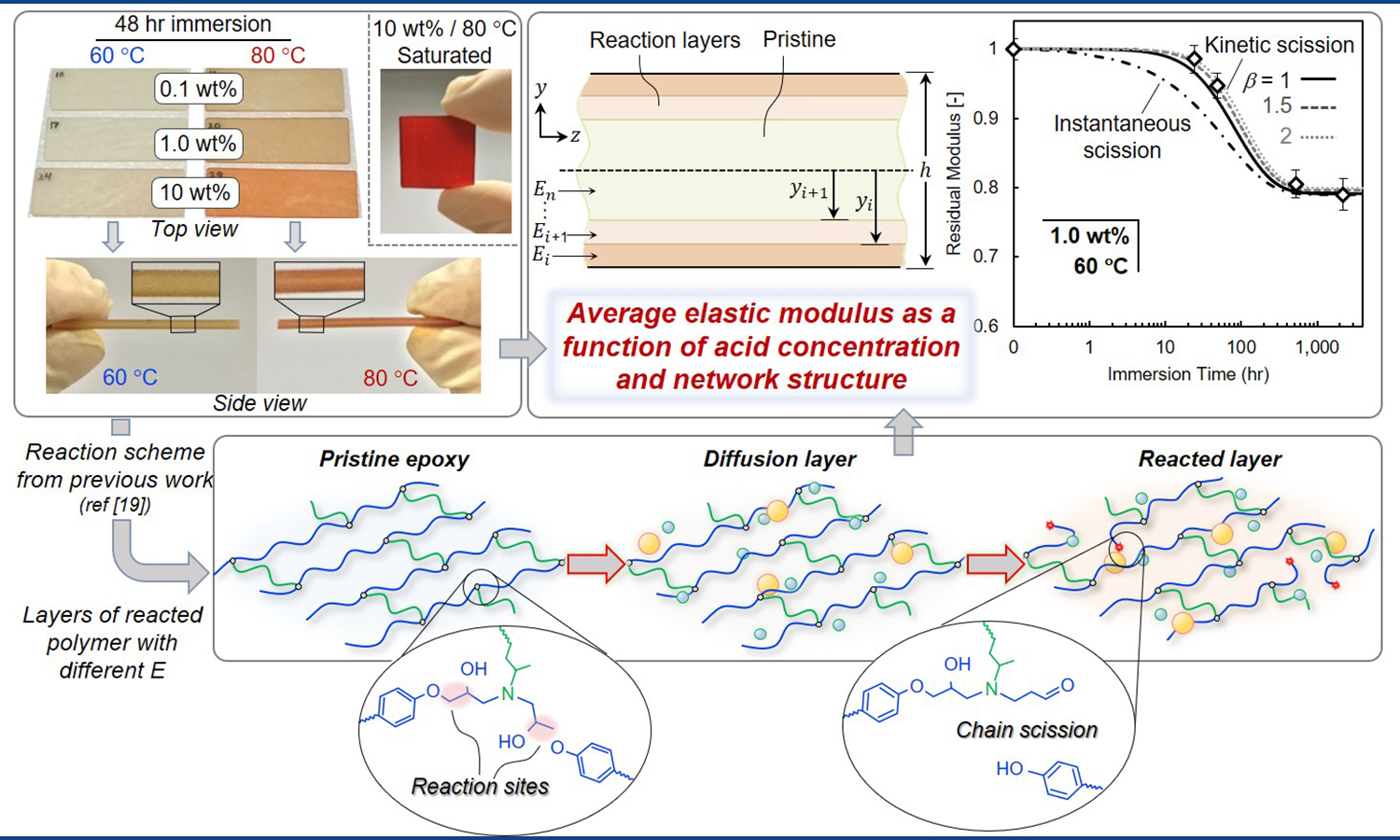Network-level analysis of damage in amine-crosslinked diglycidyl ether resins degraded by acid
Jonathon Tanks, Yoshihiko Arao, Masatoshi Kubouchi
Vol. 16., No.5., Pages 488-499, 2022
DOI: 10.3144/expresspolymlett.2022.37
DOI: 10.3144/expresspolymlett.2022.37
GRAPHICAL ABSTRACT

ABSTRACT
Amine-crosslinked epoxy resins represent a large fraction of polymers used in structural and coating applications, meaning the characterization and modeling of environmental durability and mechanical reliability is of utmost importance. In particular, chemical storage tanks, sewage systems, and oil/gas infrastructure involve prolonged exposure to organic and inorganic acids. However, the majority of meso-scale models for polymer network degradation are more appropriate for hydrogels than stiff thermosets; meanwhile, other models developed for acid degradation of ester-containing networks are not applicable to amine-cured epoxies due to the assumption that crosslink density decreases. In this paper, we report the acid uptake and subsequent degradation behavior of bisphenol-F epoxy cured with an aliphatic amine, as well as propose a simple but physically meaningful model for an ideal 2D network that effectively relates acid uptake and polymer structure to the decrease in elastic properties over time. Parameters include crosslink density and acid penetration rate, and the only best-fit parameter is the reaction rate constant. This analysis can be extended to more complex network structures and environmental conditions to model neat resins and composites.



